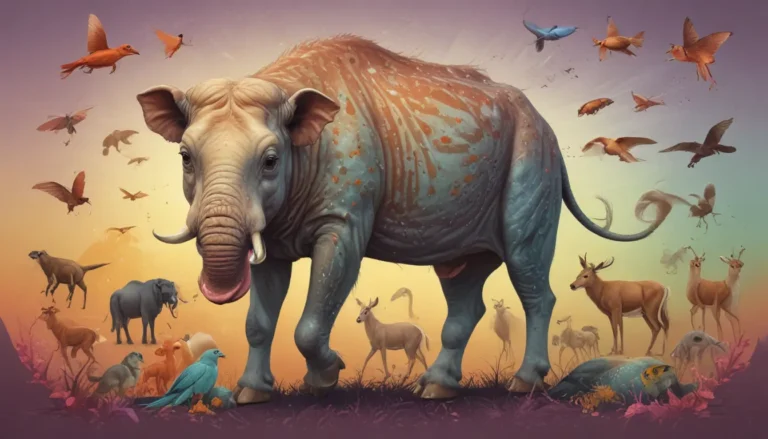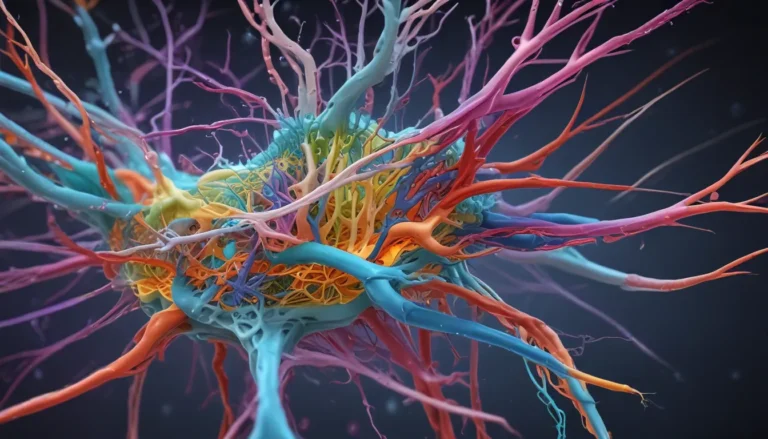A Note About Images: The images used in our articles are for illustration purposes only and may not exactly match the content. They are meant to engage readers, but the text should be relied upon for accurate information.
When it comes to understanding the beautiful intricacies of our planet’s ecosystems, one cannot ignore the crucial role played by biotic factors. Biotic factors encompass all living organisms within an ecosystem, ranging from majestic trees to microscopic fungi. These organisms interact with each other and their surroundings, creating a harmonious balance that sustains life on Earth.
In this article, we will delve into the captivating world of biotic factors and uncover nine intriguing facts that shed light on their significance and influence on ecosystems. Whether you have a passion for biology or simply a curiosity about the marvels of nature, these facts are bound to capture your imagination and deepen your appreciation for the interconnectedness of life forms on our planet.
Biotic Factors: The Essence of Living Ecosystems
Biotic factors serve as the living components of an environment, encompassing plants, animals, fungi, and microorganisms. These organisms interact not only with each other but also with non-living elements in their habitat, shaping their surroundings and impacting the overall ecosystem’s health and stability.
The Impact of Biotic Factors on Biodiversity
The diversity of biotic factors within an ecosystem contributes to its richness and variety of species. Interactions between different organisms, such as predator-prey relationships and symbiotic associations, play a vital role in maintaining the balance and resilience of the ecosystem.
Affecting the Physical Environment
Through their activities, biotic factors can manipulate the physical characteristics of their environment. For example, industrious beavers construct dams that alter water flow and create new habitats for other organisms, while plant roots stabilize soil and prevent erosion.
The Dual Nature of Biotic Factors
Biotic factors can exhibit both positive and negative impacts on ecosystems. While some organisms contribute to the well-being of their environment by pollinating plants or decomposing organic matter, others can become invasive species or disrupt the ecosystem through predation or disease transmission.
Interconnectedness Among Living Organisms
No organism exists in isolation within an ecosystem; they rely on each other for resources, shelter, and survival. The intricate food web illustrates the flow of energy and nutrients through the ecosystem, highlighting the interdependence of biotic factors.
Evolution and Adaptation in Biotic Factors
Organisms continually undergo genetic changes and adaptations to thrive in their environment. This process of evolution ensures that biotic factors can persist and evolve alongside environmental changes, maintaining their role in the ecosystem.
Fueling Ecosystem Productivity
Through essential processes such as photosynthesis, biotic factors convert sunlight, water, and carbon dioxide into energy-rich compounds that support ecosystem growth and productivity. They serve as the primary producers on which other organisms, including herbivores and carnivores, depend.
Indicators of Ecosystem Health
The presence or absence of specific organisms can serve as indicators of an ecosystem’s overall health and functioning. For instance, the decline of certain bird species may signal environmental pollution or habitat degradation, prompting the need for conservation efforts.
Human Impact on Biotic Factors
As a dominant species, human activities such as deforestation, pollution, and habitat destruction can disrupt ecosystems and pose threats to various biotic factors. Conservation efforts are essential to safeguard and restore these critical components of our natural world.
In Conclusion: Embracing the Marvels of Biotic Factors
Exploring the realm of biotic factors unveils a captivating tapestry of interactions and dependencies within ecosystems. From the delicate balance of predator-prey relationships to the essential role of plants in sustaining life, these factors form the foundation of biological communities.
Understanding the impact of biotic factors is not only vital for scientists and ecologists but also for individuals seeking a profound connection with the natural world. By acknowledging the intricate connections between living organisms, we can gain a deeper appreciation for the intricate balance that exists within our ecosystems.
So, the next time you immerse yourself in a lush forest or encounter a diverse array of wildlife, remember the profound influence of biotic factors. Each living organism plays a meaningful role in shaping its environment, contributing to the wondrous tapestry of life on Earth.
Exploring Biotic Factors: FAQs
Q: What are biotic factors?
A: Biotic factors refer to all living organisms, including plants, animals, fungi, bacteria, and microorganisms, and their interactions within an ecosystem.
Q: How do biotic factors influence an ecosystem?
A: Biotic factors have a significant impact on an ecosystem, contributing to biodiversity, energy flow, and nutrient cycling. Interactions among biotic factors, such as predation and competition, shape the structure and dynamics of ecological communities.
Q: Can biotic factors change over time?
A: Yes, biotic factors can change over time due to environmental fluctuations or human activities that impact the distribution, abundance, and interactions of organisms within an ecosystem.
Q: Are humans considered as biotic factors?
A: Yes, humans are considered as biotic factors, with our activities influencing ecosystems and altering natural processes through practices like agriculture, deforestation, and pollution.
Q: Are biotic factors only found in natural environments?
A: Biotic factors exist in both natural and artificial environments, including urban areas where plants, animals, and microorganisms interact with each other and their surroundings.
Q: Are biotic factors essential for the survival of ecosystems?
A: Absolutely, biotic factors are vital for ecosystem survival, providing the necessary components for energy flow, nutrient cycling, and overall ecological functioning.
Q: How can we protect biotic factors?
A: Protecting biotic factors requires conservation efforts focused on preserving habitats, reducing pollution, promoting sustainable practices, and raising awareness about the importance of biodiversity and ecosystem health.
Q: Can biotic factors benefit humans?
A: Biotic factors offer numerous benefits to humans, including essential resources like food, medicine, raw materials, and ecosystem services such as pollination and soil fertility.
As you journey through the captivating world of biotic factors, you’ll deepen your understanding of the intricate web of life that sustains our planet. Remember, each living organism, no matter how small, plays a crucial role in shaping our ecosystems and enriching the tapestry of life on Earth.






